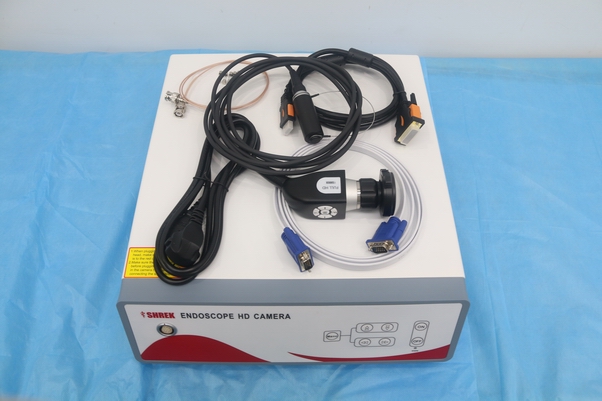Exploring the Parts and Functionality of Laparoscopic Camera
Laparoscopic surgery has revolutionized the medical field, allowing for minimally invasive procedures that greatly reduce patient trauma and recovery time. Central to the success of laparoscopic surgery is the laparoscopic camera, which allows for visualization of the surgical field in real-time. In this essay, we will explore the parts and functionality of the laparoscopic camera.

The laparoscopic camera consists of several key components. At its core is a small image sensor, which captures the visual information from the surgical field. This image sensor is attached to the distal end of a long, thin cable, which is inserted into the patient's body through a small incision. The cable is surrounded by a protective sheath, which prevents damage to the cable and the surrounding tissue.
At the proximal end of the cable is a camera head, which houses the image sensor and other critical components. The camera head is usually detachable, allowing for easy cleaning and maintenance. A coupler is used to connect the camera head to the laparoscopic telescope, which provides the surgeon with a magnified view of the surgical field.
The laparoscopic camera also has a light source, which illuminates the surgical field. The light source is usually a fiber-optic cable that is attached to the camera head. The light travels down the cable and is then reflected onto the surgical field by a mirror. The brightness of the light can be adjusted to provide optimal visualization.
The laparoscopic camera is controlled by the surgeon through a control unit, which allows for adjustments to the camera settings, such as zoom and focus. The control unit also allows for the selection of different video output modes, such as composite, S-video, and digital.
In addition to the camera itself, other components are required for laparoscopic imaging. These include the laparoscopic telescope, which provides the surgeon with a magnified view of the surgical field, and the insufflation system, which inflates the abdomen to create a working space for the surgeon. The video monitor, which displays the image captured by the camera, is also critical to the laparoscopic system.
In conclusion, the laparoscopic camera is a key component of minimally invasive surgery. It consists of several parts, including the image sensor, camera head, light source, and control unit, and is critical for providing real-time visualization of the surgical field. The laparoscopic camera has greatly improved patient outcomes, and its continued development and refinement will undoubtedly lead to even better surgical techniques in the future.



Leave a message